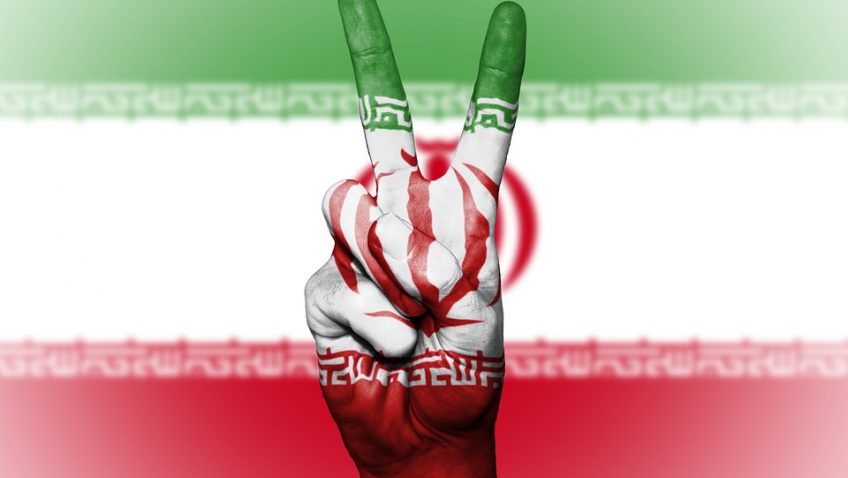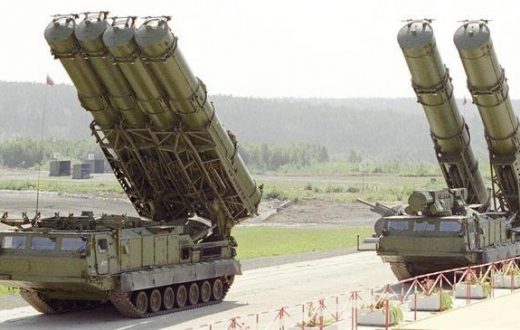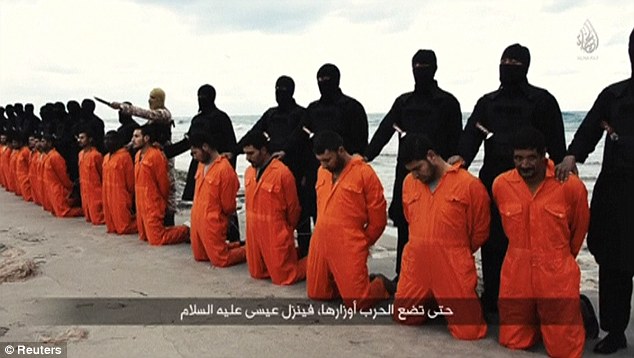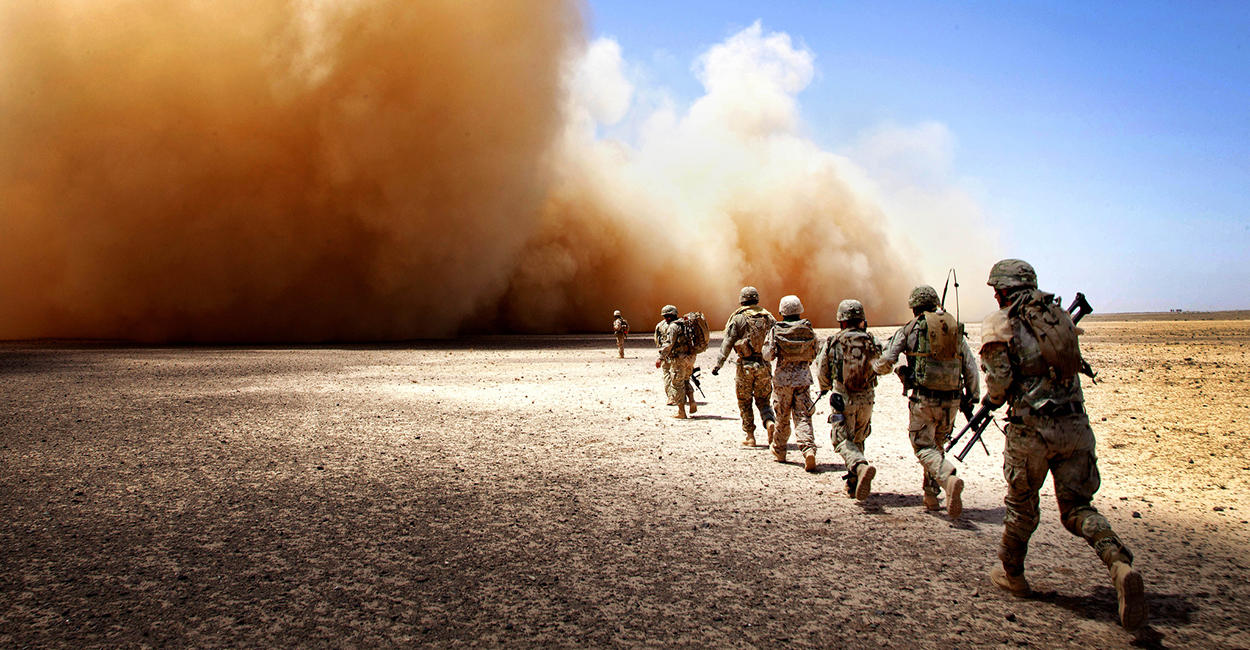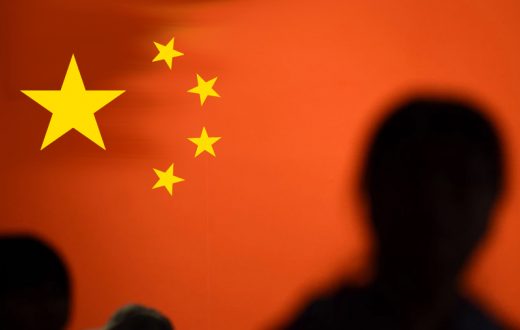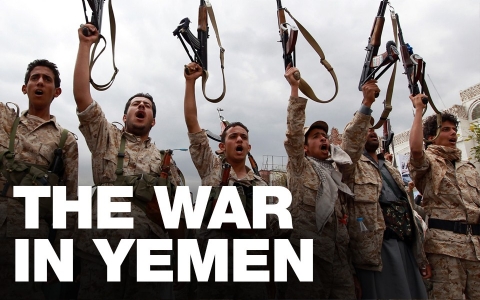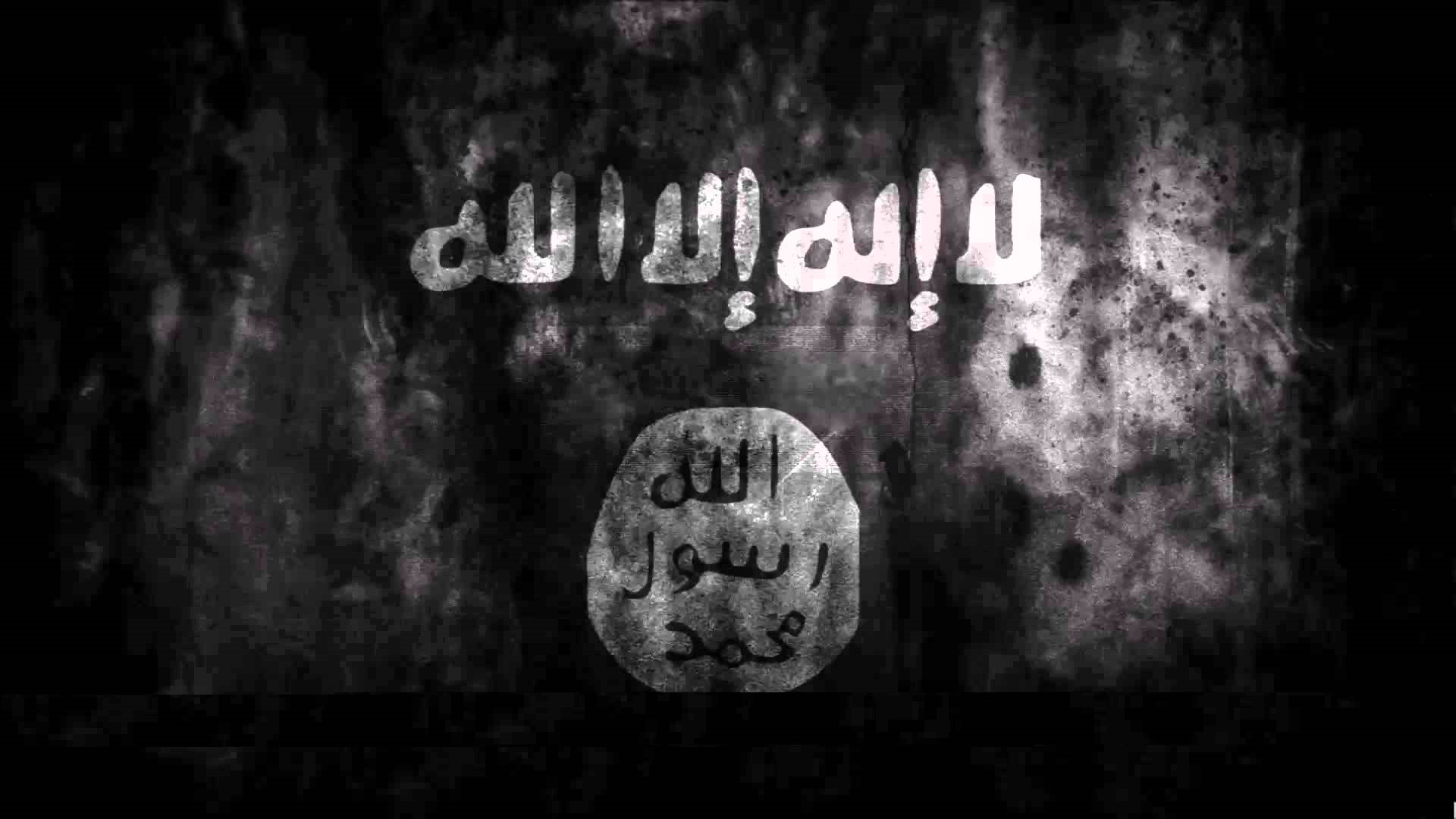This article was originally published on the INSS website and is available here. This article was written by Orit Perlov and Udi Dekel.
Iran is the dominant actor in Syria. It dictates the fighting on the ground by the pro-Assad coalition, controls the Syria-Iraq and Syria-Lebanon border crossings, and tailors the re-organization of areas and communities based on an ethnic element. Iran wields much – and often decisive – influence on the pace of fighting, in consultation with Russia and Assad. A multi-tiered approach – including control of the Syrian central axis, territorial contiguity, and logistical and commercial axes – is used by different military groups and militias comprising an Iranian fighting force Israel, which enjoys intelligence supremacy in Syria, is currently ignoring the presence of Iran’s proxies and the other forces under Iranian command in southern Syria. Apparently Israel believes that these forces do not constitute an imminent threat, at least in the near future, and is focusing on preventing the consolidation of substantial Iranian military capabilities in Syria, namely, missiles, rockets, unmanned aerial vehicles, air defense systems, and advanced weapons. It appears that at this stage, Israel relies on Russia and the Assad regime to keep Iran’s forces and its proxies away from the border. It is highly questionable, however, whether Russia and Assad have the will or the capability to get rid of the Iranian presence on Syrian territory, especially in view of the integration of Iranian commanders and Shiite fighters in the local forces.
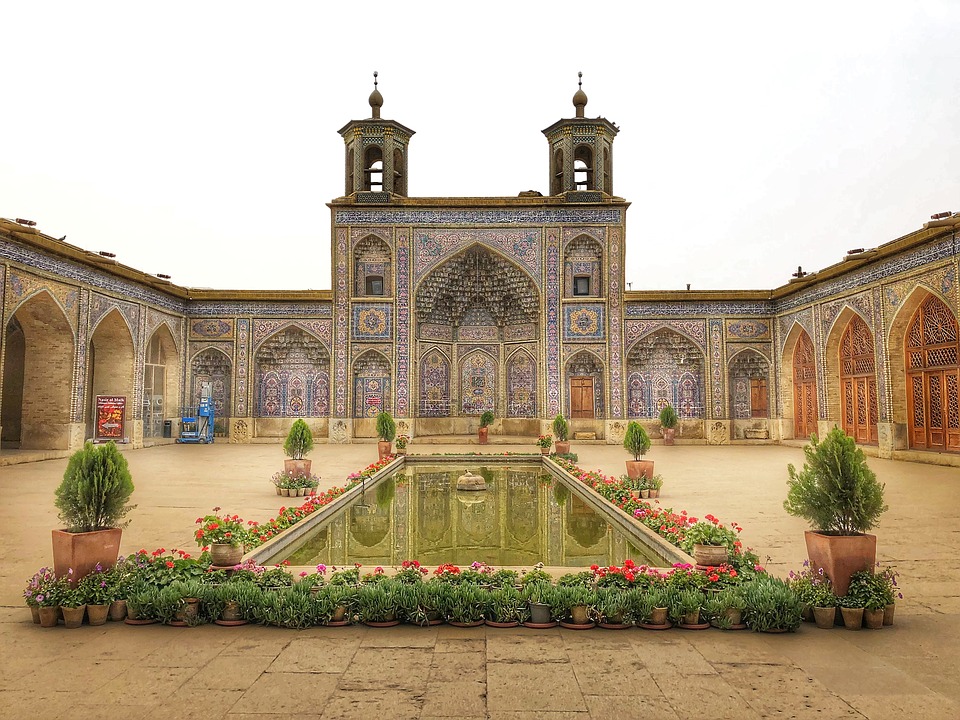
Credit : PixaBay
The Iranian military involvement in Syria, which began in 2012, was designed to save the Assad regime and consolidate Iran’s long term influence in the country. Discourse on the social media is an important tool in understanding Iran’s method of operation in Syria, its forces and proxies stationed in the country, and the growth of its influence there. This article is based on the discourse and assessments of Syrian activists and leaders of public opinion (mainly Sunni) on the social media, verified by documents, pictures, evidence from the field, and interpretations by experts. All of this sheds light on the “Iranian model” in Syria, which relies on the buildup of a range of forces that are subject to Iranian authority and serve its interests in the region. In cooperation with the Assad regime, Iran’s intervention is kept on a low profile, as it deploys soldiers obedient to Iranian authority within the Syrian army, defense units, and militias presumably fighting for the regime.
It is commonly believed that since Iran and Hezbollah joined Syria’s civil war until the present time, i.e., the liberation of southern Syria from the rebels in July 2018, Iran, and not Russia has been the dominant actor in Syria. Iran dictates the fighting on the ground by the pro-Assad coalition, controls the Syria-Iraq and Syria-Lebanon border crossings, and tailors the re-organization of areas and communities based on the ethnic element. Iran wields much – and often decisive – influence on the pace of fighting, in consultation with Russia and Assad.
The operational outline of the pro-Assad coalition, which comprises Russia, Iran, and its proxies, is as follows: first Iranian advisors observe the site, and assess the operational feasibility and prospects for successful conquest. Then they meet with the Russian liaison officers in order to coordinate the land and air operation; military combat forces are then sent into the campaign – Syrian army forces and the Shiite militias under Iranian command. The area designated for liberation from the rebels is surrounded and besieged. The operation begins with a crushing aerial bombardment by Russian air units and the Syrian air force, combined with heavy artillery fire. Once the rebels’ strongholds have been weakened, the land forces penetrate and liberate the area. At the same time, negotiations with the rebels for a surrender settlement are conducted by Russian officers.
The Axes Approach
According to the Iranian approach, a number of axes are needed to preserve the Assad regime, which together with geographic control and command control in Syria is a key instrument of Iranian influence, and an important phase toward control of the Shiite crescent and creation of a land corridor connecting Iran with the Mediterranean Sea.
a. The Syrian “spine”: Axis of major cities in the center and north of the country, home to most of the population and the governmental and economic centers. An essential condition for victory in the war is maintaining control of the along the “spine” from Daraa in the south through the capital city of Damascus and continuing on the central axis leading north to Homs, Hama, and Aleppo, and west to Latakia.
b. Territorial contiguity: Iran is gradually taking over a number of key areas in order to create a contiguous territorial presence between Iran and the Mediterranean Sea, first aiming at the easier portion and then proceeding to the more difficult parts: the Syrian-Lebanese border, followed by Damascus surroundings, the Iraqi-Syrian border, east-to-west strategic hinges, and now southern Syria. In the next stage, forces will be freed up to take over two more challenging regions in northeast Syria – the Kurdish zone, supported by the US-led Western coalition, is essential for Iran, because it controls the Syrian-Iraqi border, and the Idlib province, the last stronghold of the Sunni rebels, which is protected by Turkey. Gaining control of these areas is too difficult at this stage, and has therefore been postponed to subsequent stages of the civil war.
c. Logistics: the main supply corridor from Iran to Syria via Iraq, and from there to Lebanon (by land and by air). This axis (which in a speech in August 2017 Hassan Nasrallah called “the liberation road”) is essential to the buildup of Iran’s capabilities in Syria and its ability to send forces, weapons, and logistics support to its proxies.
d. The commercial and trade axis will be reopened after being completely closed the past few years. It will pass along the “spine” from northern to southern Syria along the M5 international highway from Turkey to Jordan and the Gulf states via Syria. This axis will help in Syria’s economic reconstruction and relieve Iran of some of the economic burden.
Structure of the Iranian Force
The online discourse also reveals a multi-layered structure of forces in Syria marked by growing Iranian influence.
a. The Quds force of the Iranian Revolutionary Guard Corps is an organic Iranian force responsible for Syria; the other forces operate under it. Its order of battle and deployment have changed during the war according to the operational needs, varying from 2,000 to 5,000 soldiers. The force includes commanders and consultants operating alongside other forces in the pro-Assad coalition – the Syrian army, the Syrian militias, and the Shiite militias. The Quds force was reinforced in the second year of the civil war when there was serious concern about the survival of Assad’s regime. In the first stage, most of its mission was defensive – guarding President Assad, his loyalists, and his strongholds. With the progress of the fighting, most of its missions switched from defense to offense and assistance in the liberation of areas taken by the rebels. The force later helped open up the strategic routes and arteries.
b. Syrian National Defense Forces: In the early years of the civil war, when the Syrian army (the Syrian Arab Army – SAA) under Assad’s control almost collapsed (due to desertions, lack of recruitment, and heavy losses), Iran decided to help Assad establish the National Defense Forces (NDF) – Syrian militias with Iranian command, training, financing, and armaments. The NDF forces are the Syrian equivalent of the popular Shiite Iraqi militias (Hashad al-Shaabi) and Hezbollah in Lebanon. According to reports, the NDF has recruited some 90,000 Syrian volunteers, with the goal being to base most of the force on Alawites and Shi’ites. At the same time, they have also recruited people from other sectors.
c. Local Defense Forces (LDF) – police, security, and civil administration units of local militias believed to number up to 50,000 men. This body, manned by people loyal to the regime, was established by Iran in response to the demand of local communities loyal to the rule of the central regime in Damascus, in part in order to detect and eliminate those cooperating with the rebels and opposition groups in Syria. Iranian or Hezbollah commanders are integrated in these militias.
d. Shiite militias – the Shiite militias from Afghanistan (Fatemiyoun Liwa) and Pakistan (Zeinabiyoun Brigade) recruited and operated by Iran. These militias are believed to number 10,000-15,000 soldiers. They were designated for use as a key strike force in liberating territory held by the rebels and later for strengthening Shiite and Alawite communities in Syria and protecting them from revenge and hostile activity by the various radical Sunni militant groups. Iran, in coordination with Assad, is encouraging the soldiers of these militias and their families to immigrate to Syria, where they undergo a process of naturalization and absorption in preparation for remaining there, even if it is decided to remove foreign forces from the country as part of a political settlement. The soldiers and their families are settled in officers’ neighborhoods abandoned by Sunni refugees and displaced persons. The purpose is to strengthen Shiite identity in Syria and together with the Shiite and Alawite recruits to the LDF/NDF militias, to consolidate long term Iranian influence and fortify internal support for the Assad regime.
e. Shiite rapid intervention forces: Iran sometimes uses Shiite militias from Iraq and Lebanon (Hezbollah’s Radwan units, Asa’ib Ahl al-Haq, Hezbollah Clavade, Harakat Hezbollah al-Nujaba, Liwa’a Zulfiqar, Liwa Dhu al-Fiqar, Liwa Abu al-Fadhal al-Abbas, Kawe al-Jafiryah, and others) as forces for rapid intervention in combat areas in order to decide the battle when forces are inadequate for overcoming rebel resistance. At the peak of the fighting, the rapid intervention forces contained up to 30,000 soldiers. In contrast to the attempt to make the Afghan and Pakistani militias into Syrian citizens, the militias from Iraq return to their home countries when their missions are accomplished.
f. Hezbollah – The Damascus Shield and Protector of Lebanon Perimeter: Hezbollah has operated in Syria since 2012 with an order of battle varying from 4,000 to 9,000 soldiers (the number varies according to the unfolding events of the civil war) alongside Assad and under Iranian direction. Hezbollah’s first mission in Syria was to save the Assad regime and closely protect Damascus. In late 2016, Hezbollah forces took part in the battle to liberate Aleppo, Syria’s second largest city. At the same time, Hezbollah focused on fighting in order to preserve its achievement in the area bordering Lebanon, called the Q zone – Quneitra, Qalamoun, and al Qusayr. The main goal was to expel the rebels and the Sunni population in essential areas, in order to safeguard the access roads from Syria to Lebanon, settle a friendly population along and adjacent to the Syrian-Lebanese border, and prevent terrorist and revenge attacks by Salafi jihadist groups in Lebanon. The discourse on the social media suggests that Shiite combatants (excluding those from Iraq) land in Beirut Airport, and proceed to recruitment, absorption, and training camps in Lebanon operated by Hezbollah. After their training period is over, the recruits wearing Syrian army uniforms, are integrated into forces fighting on the side of the Assad regime.
g. Lebanese and Iraqi mercenaries. These fighters are not members of the various Shi’ite militias, but help in fighting in areas where logistical and operational support is needed. They are funded by Iran and, like the Shiite militias from Iraq and Hezbollah, also return to their home countries when their missions are accomplished.
Implications for Israel
Iran conceals its control in Syria; it wants to act and influence behind the scenes, while integrating the forces under its command into the country’s militias and military governmental framework. It is therefore difficult to establish precisely the number of Iranian proxy forces in Syria. According to many Syrian media reports, especially on opposition websites and social media, the Iranian forces, Hezbollah, and the Shiite militias are participating in the fighting taking place in southern Syria while wearing Syrian army uniforms. Russia is certainly aware that not only are the pro-Iranian Shiite militias not withdrawing from southern Syria, but they are even reinforced there. Presumably the Iranian project in Syria will continue, and forces identified with Iran will be deployed near the border in the Golan Heights under some kind of cover in the near future.
Israel, which enjoys intelligence supremacy in Syria, is currently ignoring the presence of Iran’s proxies and the other forces under Iranian command in southern Syria. Apparently Israel believes that these forces do not constitute an imminent threat, at least in the near future, and is focusing on preventing the consolidation of substantial Iranian military capabilities in Syria, namely, missiles, rockets, unmanned aerial vehicles, air defense systems, and advanced weapons. It appears that at this stage, Israel relies on Russia and the Assad regime to keep Iran’s forces and its proxies away from the border once they realize that Iran’s growing involvement and penetration of the local Syrian forces in effect undermines the regime’s sovereignty. It is highly questionable, however, whether Russia and Assad have the will or the capability to get rid of the Iranian presence on Syrian territory, especially in view of the integration of Iranian commanders and Shiite fighters in the local forces. In this case, Israel will have the option of attacking the Iranian proxies even after Assad completes his liberation of the Syrian Golan Heights.
This article was originally published on the INSS website and is available here. This article was written by Orit Perlov and Udi Dekel.

